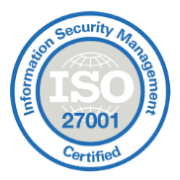Today’s biggest challenge businesses face is getting employees to use the necessary technology effectively. Technology is essential for sustainable business operations, including machinery, equipment, digital interfaces, and software programs. However, technology doesn’t provide much value unless it is embraced and utilized by end-users who can leverage it to improve efficiency. Unfortunately, many employees find adopting and using technology challenging. It is where end-user training becomes crucial.
It aims to help employees overcome the obstacles associated with technology adoption. By providing training, businesses can empower their workforce to confidently and effectively use the technology. End-user training ensures that employees have the knowledge and skills to make the most of the technology, ultimately enhancing productivity and achieving business goals. Addressing the challenge of technology adoption through comprehensive end-user training is vital to thriving in today’s competitive business landscape.
What is End-User Training?
End-User Training ensures that employees or target users are aligned with the company’s goals and requirements. In 2023, one of the popular methods for delivering End-User Training is through interactive on-screen guidance or similar interactive learning approaches. This type of training can be conducted at various stages of an employee’s or user’s journey, providing support and knowledge when needed. Employee Onboarding and User Onboarding are common scenarios where End-User Training is highly beneficial.
With the rise of remote onboarding, virtual training for end-users has become increasingly important. It allows companies to effectively train their employees or users regardless of physical location, ensuring they have the necessary skills and understanding to perform their roles efficiently. In a rapidly evolving world where technology plays a significant role, prioritizing End-User Training is essential to keep employees and users updated and maximize their productivity and success within the organization.
How End-User Training Enhances Business Performance
We’ve all experienced the frustration of software updates disrupting our workflow. The introduction of new tools and technologies can also unsettle employees. When businesses roll out these changes to their workforce, it can create a significant challenge. Investing in software is costly, but it becomes wasted if employees need to understand its value.
However, an effective end-user training strategy can bridge this gap. By providing training and highlighting the mutual benefits, businesses can help employees adapt to new technologies and maximize their potential. With proper training, everyone can embrace change and make the most of technological advancements.
5 Advantages of end-user Education
- Employees experience less frustration and confusion, enabling them to use technology smoothly and increase productivity.
- Understanding technology’s practical benefits in daily work enhances emotional buy-in and overall comprehension.
- End-user training supports employees, reducing resistance to new technology and creating a more capable user base, aligning with strategic goals.
- The business benefits from a higher return on software investment, gaining trust in its ability to scale and adapt while addressing employee needs.
- To achieve these outcomes, developing an end-user training approach tailored to your business, employees, and goals is crucial, considering their specific needs and requirements.
3 Types of End-User Training To Train Users Efficiently
i) Self-Instruction training
ii) Face-to-face training
iii) Automated online training
Lower Attrition for Sustainable Partnerships
By providing a robust enablement program to your partners, you keep them involved and committed for longer. It is because you help them become more effective at closing deals. Supporting their business growth is a powerful way to build loyalty among partners. It’s a win-win situation where both parties benefit from collaboration and mutual success.
Best Practices and Methods To Ensure Effective End User Training
1. List Out Why Your End Users need Effective Training
First, figure out why providing new information to end-users is essential. The reasons can vary depending on the situation:
- Introducing something completely new: You don’t have to overwhelm existing users with unnecessary details when bringing in a new feature or platform. Instead, you can focus on the specific changes and provide information through a resource center. Utilize a checklist that triggers interactive feature walkthroughs for a seamless virtual training experience.
- Going through changes: During periods of change, it’s crucial to understand change management and train end-users accordingly. An example is how RAM handled its IT system change, ensuring users were prepared for the transition.
- Training new end-users: A comprehensive training approach is necessary when dealing with newcomers. Start by introducing the basics through in-app messages, guide them with interactive walkthroughs, and offer additional support through checklists or a help center.
By tailoring the training approach to the specific needs of your end-users, you can ensure effective knowledge transfer and a smoother transition or onboarding process.
2. Identify the End-User Needs for Improved Training Experience
Before diving into user training, laying a solid foundation for success is crucial. Consider the following aspects to create a smooth and impactful training program:
- Material Necessities: Ensure your end-users have all the necessary resources, including access to required platforms, relevant accounts, prepared documents, and functional equipment. Make sure your training program is fully prepared and ready to be executed.
- Training Program Components: Focus on delivering a comprehensive training program that covers all the essential features and functionalities. Test virtual tools to ensure they work seamlessly. Incorporate progress indicators or milestones to help users track their learning journey. Communicate what lies ahead in their training progression. Additionally, provide accessible avenues for further assistance or support.
Addressing these considerations specific to your company can empower your end-users with practical and engaging training experience. With the proper preparation, you’ll set the stage for their success and maximize the impact of your training program.
3. Ensure the Training Program is Comprehensive and Detailed
The key to dynamic training lies in providing a thorough and detailed program. It’s like building a solid foundation for a house – things can effortlessly fall apart without it. In the context of training end-users, details matter.
Think about it this way, if you were learning something new, wouldn’t you want all the essential information and steps laid out for you? It’s the same for your end-users. They need clear guidance and instructions to grasp the training material.
Consider incorporating various elements into your program, such as step-by-step explanations, interactive demonstrations, and progress tracking. This way, you can ensure that your end-users completely understand the subject matter.
To further enhance your training program, seek feedback from test users or consider involving specialists who can provide valuable insights. Whether it’s an onboarding specialist for new users or a change management specialist for transitioning periods, their expertise can contribute to creating a well-rounded and operative training experience.
4. Provide Access To End-Users for Getting Additional Assistance
One crucial aspect often overlooked in end-user education is providing clear instructions on what to do when problems arise. Many users may feel lost or need help with whom to reach out to for assistance. By offering a designated “further help” option, you can address this issue and establish yourself as a reliable resource.
Including a visible and easily accessible “further help” button ensures end-users have a direct path to seek assistance whenever they encounter challenges or need clarification. It can lead to increased confidence and a smoother learning experience.
To enhance the effectiveness of your training, consider providing detailed information on how to utilize the “further help” resources. It may include specifying the appropriate contact channels, such as a dedicated support team, help desk, or online forums. Additionally, ensure that the support system is responsive and capable of promptly addressing end-users’ concerns.
By addressing the need for further help and providing clear guidance on accessing support, you can empower your end-users to overcome obstacles and foster a positive training experience.
5. Gather User Insights and Feedback for Training Enhancement
Collecting feedback from end users is crucial in improving your training process and ensuring their satisfaction. By listening to their experiences and opinions, you can identify any challenges they faced and areas needing improvement.
Engage with your end-users and ask about their journey through the training program. Such as:
- Did they encounter any difficulties or obstacles?
- Were the instructions clear and easy to follow?
- Were they able to complete the training without any issues?
Additionally, seek their overall satisfaction and allow them to provide suggestions for enhancement. Valuing their input creates a sense of assurance and demonstrates your commitment to meeting their needs.
This feedback loop allows you to make necessary adjustments, refine the training program, and deliver a more effective and user-friendly experience to your end users. Ultimately, it strengthens your credibility as a training provider and fosters a positive learning environment where end-users feel heard and valued.
What Is the Role of Paradiso LMS in End-User Training
Learning management systems (LMSs) are online tools designed to facilitate end-user training. These platforms enable remote learning by sharing data, voice, and video. They offer mobile-friendly interfaces, interactive features, and real-time communication, making the learning process more accessible and engaging for users.
Leading LMSs like Paradiso LMS caters to diverse learning styles, allowing you to create customized content in different formats. For instance, you can incorporate videos, audio, or text-based materials based on your audience’s preferences.
Moreover, a specialized LMS for end-user training, such as Paradiso LMS, provides additional features that integrate seamlessly with your Salesforce customer data. This integration allows you to leverage valuable insights and deliver personalized training experiences to your users, enhancing their learning outcomes and overall satisfaction.
Conclusion
Dynamic end-user training is vital for successfully implementing technology or effective software training projects. The way you plan and execute this training plays a significant role. Paradiso LMS offers a comprehensive solution to get your team up to speed, whether you’re training a small group or your entire organization. With its gamified and mobile-friendly interface, Paradiso LMS makes learning engaging and accessible for administrators and learners.
Plus, getting started is free. Are you ready to create personalized learning courses for your end-users, ensuring a seamless implementation? Utilize Paradiso LMS to support their learning and development, effortlessly tailoring the training to each employee’s needs with just a few clicks. With Paradiso LMS, you can empower your team with the knowledge and skills they need to maximize the benefits of your software or technology.


















